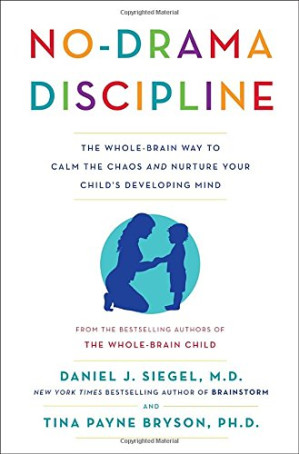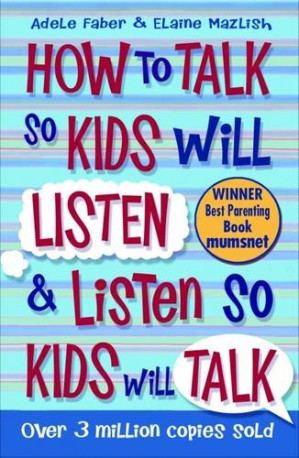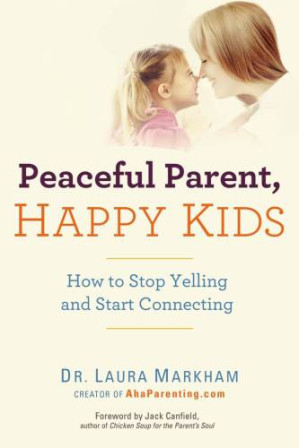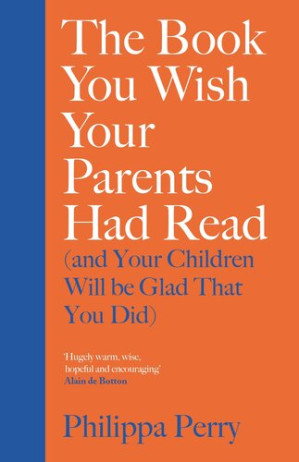Connect and Redirect: Surfing Emotional Waves
When a child is upset, logic often won't work until we address the emotional right brain.

Book summary
by Siegel & Bryson
12 Revolutionary Strategies to Nurture Your Child's Developing Mind
12 Revolutionary Strategies to Nurture Your Child's Developing Mind
Topics
Read this book as a practical guide to brain-based parenting. Use Readever to track the 12 revolutionary strategies and how they apply to different developmental stages. After each chapter, identify one strategy you can implement immediately with your child. Use the AI to explore how brain integration concepts explain specific parenting challenges you're facing and to create personalized action plans based on Siegel and Bryson's neuroscience-backed approach.
Things to know before reading
A groundbreaking guide that translates complex neuroscience into practical parenting strategies, helping parents understand how a child's brain develops and providing tools to nurture emotional intelligence, resilience, and healthy relationships.
The Whole-Brain Child introduces revolutionary concepts about brain development that transform how we understand and respond to children's behavior.
When a child is upset, logic often won't work until we address the emotional right brain.
When children recount troubling events, they learn to make sense of their experiences and manage their emotions.
In high-stress situations, appeal to your child's upstairs brain rather than triggering the downstairs brain.
Ready to continue? Launch the Readever reader and keep turning pages without paying a cent.

Siegel & Bryson
Whole-brain approach to calm chaos and nurture mind

Adele Faber & Elaine Mazlish
Transform parent-child relationships through empathetic communication

Becky Kennedy
Wise guide to raising resilient, emotionally healthy children
Discover how understanding your child's developing brain can revolutionize your parenting approach, reduce daily struggles, and help your family thrive through practical, neuroscience-backed strategies.
Key idea 1
When a child is upset, logic often won't work until we address the emotional right brain.
This strategy emphasizes connecting emotionally with your child's right brain before trying to redirect with logic. When children are emotionally flooded, their "upstairs brain" (rational thinking) goes offline, making them unable to process logical explanations. By first connecting with their feelings through empathy and validation, you help calm their emotional storm, making them receptive to redirection and problem-solving.
Remember
Key idea 2
When children recount troubling events, they learn to make sense of their experiences and manage their emotions.
This technique helps children integrate their experiences by putting words to their feelings and telling stories about what happened. When children can narrate their experiences, they activate their left brain (logic and language) to process right brain (emotion and experience) events. This integration helps them understand and manage overwhelming emotions, reducing the intensity of future emotional reactions.
Remember
Key idea 3
In high-stress situations, appeal to your child's upstairs brain rather than triggering the downstairs brain.
This strategy focuses on engaging the prefrontal cortex (upstairs brain) rather than triggering the reactive amygdala (downstairs brain). When children feel threatened or stressed, their downstairs brain takes over, leading to fight, flight, or freeze responses. By offering choices, asking for help, and appealing to their reasoning abilities, you keep their upstairs brain online and accessible.
Remember
The Whole-Brain Child is a revolutionary parenting guide that bridges the gap between neuroscience and practical parenting. Based on the latest brain research, it explains how children's brains develop and provides 12 actionable strategies to help parents navigate everyday challenges while nurturing their child's developing mind. The book demystifies complex brain science, showing parents how to promote integration between different parts of the brain, helping children develop emotional intelligence, resilience, and healthy relationships.
Open Readever's reader to highlight passages, ask the AI companion questions, and keep exploring without paying a cent.
The Whole-Brain Child has been widely praised for making complex neuroscience accessible and practical for parents. Reviewers consistently highlight how the book transforms challenging parenting moments into opportunities for brain development. Parents report that the strategies are immediately applicable and produce noticeable improvements in family dynamics.
The book's strength lies in its ability to provide scientific understanding alongside concrete tools that work in real-world parenting situations.
Parents of children ages 0-12 seeking science-based parenting approaches
Educators and childcare professionals wanting to understand child development
Anyone interested in the intersection of neuroscience and parenting
Parents struggling with tantrums, emotional regulation, or communication challenges
Daniel J. Siegel, M.D., is a clinical professor of psychiatry at the UCLA School of Medicine and executive director of the Mindsight Institute. A Harvard Medical School graduate, he is a pioneer in the field of interpersonal neurobiology. Tina Payne Bryson, Ph.D., is a pediatric and adolescent psychotherapist and the founder of The Center for Connection. Together, they have revolutionized how parents understand and respond to their children's developing brains through their bestselling books and popular parenting workshops.

Laura Markham
Stop yelling and start connecting with brain-based approach

Philippa Perry
#1 Sunday Times bestseller on healing parent-child relationships

Michaeleen Doucleff
Ancient cultures teach lost art of raising happy humans
Build your personalized reading stack
Download full-length ePubs in one click with personal cloud storage.
Blend AI-guided insights with tactile note-taking to accelerate reflection.
Follow curated reading journeys tailored to your goals and time budget.
Sync highlights across devices so lessons stick beyond the page.
Sign in to Readever to keep reading with AI guidance, instant summaries, and synced notes.
The Whole-Brain Child provides a transformative framework for parenting that combines cutting-edge neuroscience with practical strategies. By understanding how children's brains develop and learning to promote integration between different brain regions, parents can help their children develop emotional intelligence, resilience, and healthy relationships. The 12 revolutionary strategies offer concrete tools for navigating everyday parenting challenges while nurturing the developing mind, ultimately creating stronger family connections and helping children thrive.
The Whole-Brain Child introduces a revolutionary framework for parenting based on the latest neuroscience research. The core concept is brain integration - helping different parts of the brain work together harmoniously. When children's brains are integrated, they can regulate their emotions, make thoughtful decisions, form healthy relationships, and navigate life's challenges effectively.
When your child is emotionally flooded, their logical brain goes "offline." Instead of reasoning with them, first connect emotionally:
Help children process overwhelming emotions by telling stories about their experiences:
Keep the "upstairs brain" (prefrontal cortex) engaged during challenging moments:
The brain develops from the bottom up:
Research shows that integrated brains lead to:
By understanding and applying these brain-based strategies, parents can transform challenging parenting moments into opportunities for growth and connection, ultimately helping their children develop into emotionally intelligent, resilient individuals.
Start reading The Whole-Brain Child for free and unlock personalized book journeys with Readever.